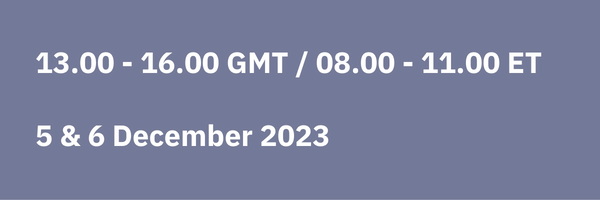The Fraud Risk Deep Dive has now passed, but keep an eye out as we will be taking interest for the Fraud Risk Deep Dive 2024 very soon.
Join our virtual event
As fraudsters become increasingly sophisticated, how can banks adapt their detection and mitigation responses? The industrialisation of fraud requires a digital response. Smarter data collection and more sophisticated analytics are a key part of the fraud detection processes. In order to find patterns of fraudulent activity you need more context, more data integrated into automated, network analysis tools rather than teams of analysts pulling spreadsheets from multiple systems.
The need to identify hard-to-spot patterns and networks in transaction data cuts across all product and business areas. Controls must be tailored to each institution’s specific business model. Individual transactions rarely provide useful counter-fraud intelligence. It is the links between transactions and the context in which they occur that can identify bad actors, bad networks and sophisticated financial crimes.
Hear Citigroup's Vinaya Parvate discussing financial fraud.
At this Fraud Risk Deep Dive you will hear the latest on how to:
-
Improve understanding of clients with real-time insights from internal and external sources
-
Prevent scams with advanced analytics solutions
-
Prioritise investment in analytic solutions with most impact
-
Discover previously undisclosed relationships and related-party activity concerning counterparties of concern
-
Implement AI to overcome the challenge of identifying fraud threats within substantial datasets
-
Accelerate accurate detection of patterns of behaviour to identify fraud risks faster
_page-0001.jpg) |
Banks, their customers, and the fraudsters that prey on them went digital long before the pandemic provided an additional incentive. This cyber-enabled industrialisation of fraud requires a digital response. Smarter data collection and analytics – and especially AI-based context and network analysis tools – are becoming a key part of the primary fraud detection backbone.
|
Our next Fraud Risk Deep Dive is in
Speakers
How the Deep Dives work
Networking
- A series of interactive pre-booked roundtable discussions between financial institutions, moderated by 1LoD
- An inter-delegate messaging system
Roundtables
Private, off the record roundtables are moderated by 1LoD, and attended by delegates from financial institutions who have booked their place in advance. They take place on Zoom. Delegates are sent discussion topics, and an overall structure of the debate in advance to assist the flow of the discussion.
What have others said about attending our virtual events?
-
"1LoD offers great events the keep you informed about how the landscape is changing as well as understanding where you firm is verses your peers."
-
"A very worthwhile event to discuss current topics faced by the industry with colleagues and technology vendors. I would recommend this to anyone in Compliance and come prepared to share in a confidential setting."
-
"Participants were very open and willing to share views and ideas."
-
"The conference gave a great opportunity to discuss current practices and challenges. An outstanding line up of speakers, very professional organisation of the event, and online support for the attendees. Would definitely be interested to attend 1LoD events in the future."
-
"The event was helpful in informing and confirming where the technology involving voice surveillance is and the approaches implemented by banks."






)
)
)

)
)
)
)
)
)

)
)
)
)
)
